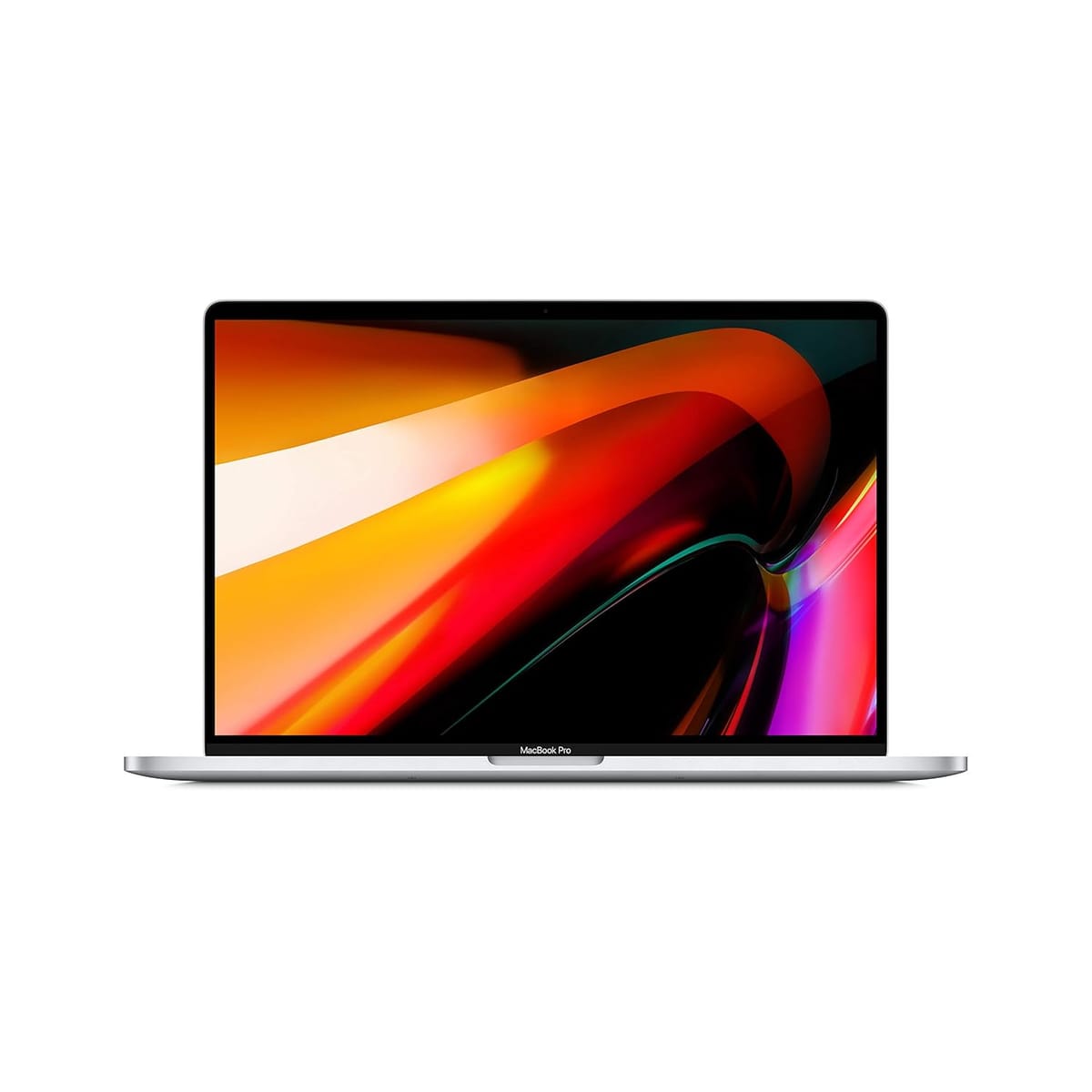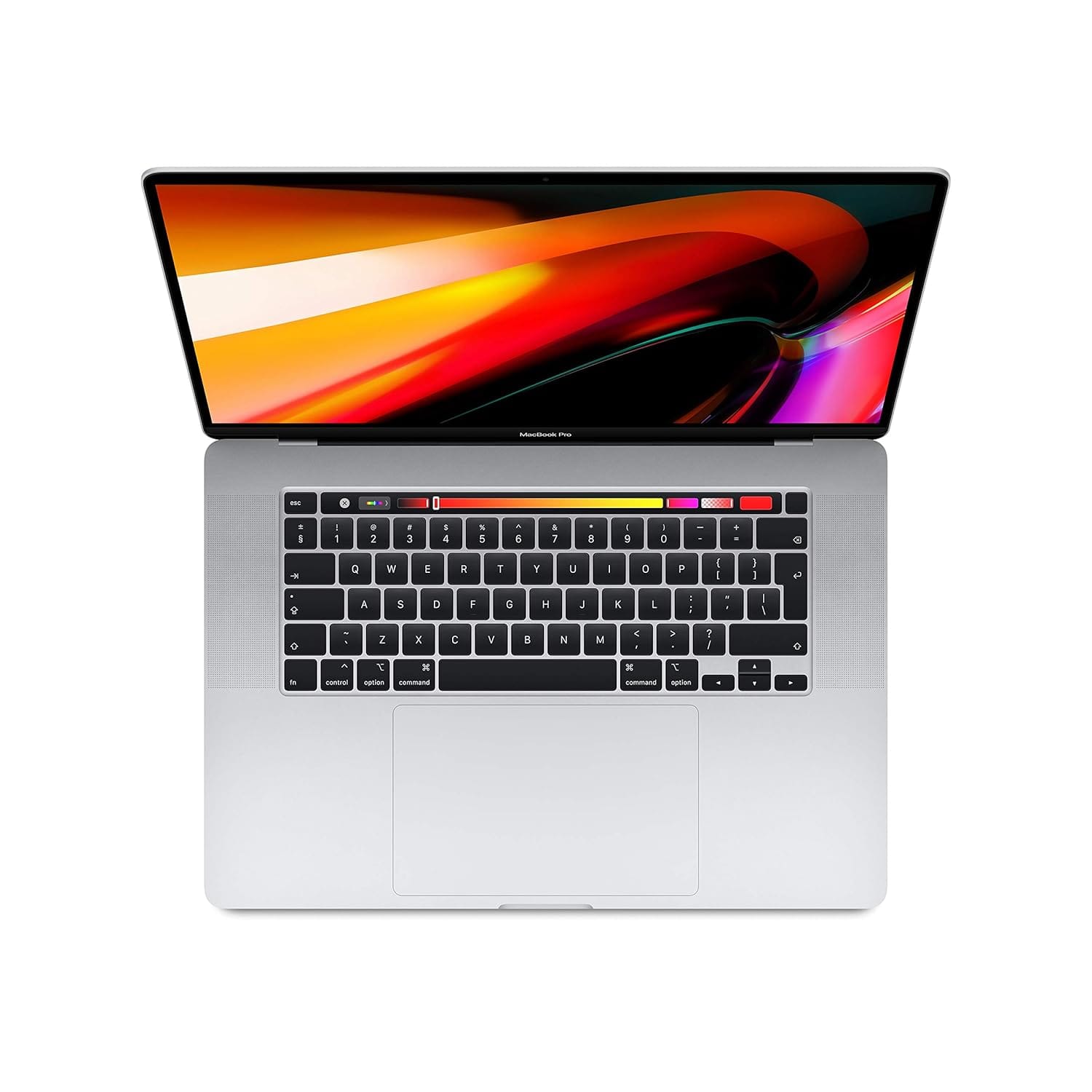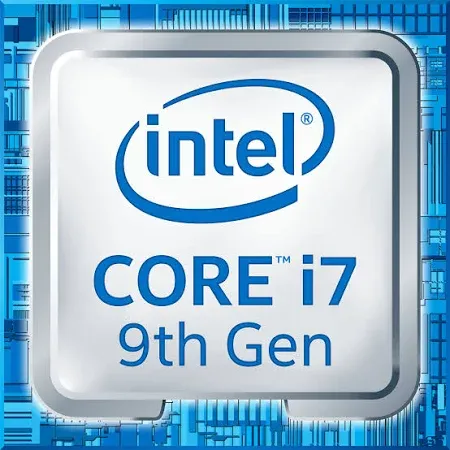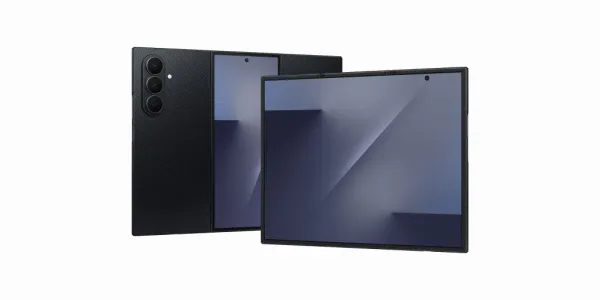MacBook Pro 16″ (2019) Review: A Creative Powerhouse from the Intel Era
MacBook Pro 16" 2019, Core i7 9th Gen, 16GB RAM, 1TB SSD, Radeon Pro 5300M. Professional notebook with immersive display.

Introduction
The MacBook Pro 16″ (2019, model A2141) arrived as Apple’s answer to several criticisms of earlier MacBooks: small screens, unreliable keyboards, limited thermal headroom, and underwhelming speakers. For creatives—photographers, videographers, music producers, designers—Apple designed this model to deliver a larger and sharper display, better cooling, a more comfortable keyboard, and excellent audio.
Powered by a 9th Generation Intel Core i7 six-core CPU, paired with discrete graphics, this notebook is built for performance. It’s no ultrabook—it’s heavier, bigger, and power-hungry—but if your work demands serious horsepower, it delivers. In this review, we’ll explore how well it holds up in 2025, especially compared to the newer MacBook Pro M4 / M4 Pro / M4 Max models.
Specifications Overview
| Feature | MacBook Pro 16″ (2019, A2141) |
|---|---|
| Processor | Intel Core i7, 9th Gen, 6 cores |
| RAM | 16 GB DDR4 |
| Storage | 1 TB SSD |
| Graphics | AMD Radeon Pro 5300M (4 GB GDDR6) |
| Display | 16″ Retina, 3072×1920 resolution, 60 Hz |
| Touchscreen | No |
| Dimensions | 35.79 × 24.59 × 1.62 cm |
| Weight | ~2.0 kg |
| Ports | 4× Thunderbolt 3 (USB-C), Audio Jack |
| Special Features | Large Retina display, Magic Keyboard, improved speakers, 100 Wh battery |
Design and Build Quality
The design of the 16″ MacBook Pro looks familiar but refined. With slimmer bezels around the display, Apple managed to place a 16-inch screen in a chassis only slightly larger than the 15-inch predecessor. The aluminum unibody build is premium, rigid, and exudes durability.
The Magic Keyboard (scissor mechanism) replaced the earlier butterfly keyboard designs, offering improved key travel, better reliability, and noticeably higher comfort. The large glass trackpad remains excellent for precision work. The hinge feels solid, lid opens easily enough, and the palm rest area is spacious.
Despite being heavier (about 2.0 kg), the build quality justifies the weight. The trade-off is portability vs performance—in many ways, this laptop leans toward the “studio / field creative” segment rather than ultra-mobility.
Display, Audio, and Speakers
The display is one of the standout features. The 3072×1920 Retina panel delivers sharp text, excellent color fidelity (P3 color gamut), and plenty of workspace for editing timelines, side-by-side windows, large canvases, or spreadsheets. CreativeBloq calls this screen “tailor-made for modern creatives” because it balances size, resolution, and color accuracy.

Brightness is strong, contrast good, and while it is not OLED, it’s very good at what it does. Viewing angles are solid. The speakers are significantly improved compared to older models: a six-speaker sound system with force-cancelling woofers, offering fuller bass, clear mids, and excellent stereo spread. It makes audio playback, video conferencing, and media creation more immersive.
Performance and GPU Capabilities
With its six-core Intel i7 chip and Radeon Pro 5300M GPU, the 16″ MacBook Pro 2019 delivers excellent performance in creativity-oriented tasks. Video editing, 4K workflows, color grading, rendering, audio plugin chains—these all benefit from discrete graphics and better cooling. Benchmarks and reviews report strong handling of demanding tasks, especially compared to the older 15-inch models.

RAM at 16 GB is adequate for many creative applications though for very large projects (many video tracks, 3D renders, large texture packs), more RAM helps. The 1 TB SSD is fast and generous, reducing swap-out and speeding large file access.
Thermally, under heavy load, the machine heats up and the fans become audible. Apple improved its thermal architecture in this generation—more heat sink mass, better airflow—to mitigate throttling. While you will hear fans in demanding situations, the performance remains stable.
Battery Life and Real-World Usage
For a laptop of this power and size, battery life is surprisingly good. In lighter tasks like web browsing, document editing, or video streaming at moderate brightness, users report battery life that can stretch close to full workdays. The large battery (~100 Wh) helps a lot.
However, under heavy workloads—rendering, 4K video export, GPU tasks—battery drops faster as expected. For such use, being plugged in makes a meaningful difference.
Connectivity and Ports
This MacBook Pro includes 4 Thunderbolt 3 (USB-C) ports and an audio jack. All four Thunderbolt 3 ports support high speed data, video output, and power delivery. The lack of USB-A, SD card slot, or HDMI is still a downside for some users, meaning adapters or dongles are often necessary.
Wireless connectivity and Bluetooth are reliable. For those who work in studio settings or connect external displays, the multiple TB3 ports are helpful. For capacity to connect eGPUs, docks, large external monitors, these ports give flexibility.
Why the 2019 Model Still Matters for Creatives
- The large Retina display with accurate color is essential for visual professionals.
- Discrete graphics provide performance in applications that can leverage GPU acceleration (video effect rendering, color grading, 3D).
- The Magic Keyboard improves reliability and reduces frustration compared to earlier butterfly keyboards.
- The 100 Wh battery gives reasonable uptime for many creative users when working without demanding load.
- It represents a middle ground: serious power without paying the premium of top M-series machines, especially in the refurbished market.
Comparison with MacBook Pro M4 / M4 Pro / M4 Max
To understand whether the 2019 16″ MacBook Pro still makes sense, comparing with modern Apple Silicon models is important. Here’s how it stacks up:
| Feature | 2019 16″ (Intel) | MacBook Pro M4 | MacBook Pro M4 Pro | MacBook Pro M4 Max |
|---|---|---|---|---|
| CPU & Architecture | Intel i7, 6 cores, higher power draw | M4 chip (more efficient, high single-core / multi-core performance) | M4 Pro extends GPU/CPU cores, better for pro apps | M4 Max further boosts GPU cores, excellent for very heavy GPU / multi-display workflows |
| RAM / Memory | 16 GB DDR4 | Unified memory ~16-24 GB, more efficient | Higher tiers with more unified memory | Max configurations with even more memory / bandwidth |
| GPU / Graphics | Radeon Pro 5300M (4 GB) | Integrated Apple GPU (efficient for many tasks) | More GPU cores, better for pro video / rendering | Highest GPU performance among Apple laptops |
| Display | 16″ Retina 3072×1920, good colour, 60Hz | More modern displays, sometimes higher brightness / HDR | Even brighter panels, higher contrast, sometimes ProMotion / XDR in newer models | Top-built displays with best specs |
| Ports & I/O | 4× TB3 | Modern models with more variety (HDMI, SD-card, etc.) depending on Pro / Max | More ports in Pro / Max models | Similar or more, often with higher performance ports |
| Battery Life | Decent, drops with heavy load | Much better efficiency, longer mobile use | Better sustained performance under load, longer battery life | Highest longevity in Apple laptop line-up |
| Cooling & Noise | Gets warm and loud under load | Quieter under similar tasks, better thermal design | Better thermal headroom, more consistent performance | Best performance per watt and thermal stability |
| Suitability for Creatives | Excellent for many workflows if refurbished well, strong discrete GPU | Great for most creative users, very capable integrated GPU + acceleration | Better for more demanding multi-GPU / plug-in heavy workflows | Ideal for high-end workflows (4K/8K, many displays, GPU render, etc.) |
| Price (Refurbished) | Much lower vs new M4 models | Higher, premium | Even higher | Highest price but highest performance |
Pros & Cons in 2025
Pros
- Large, high-resolution Retina display with excellent color accuracy and decent brightness
- Discrete GPU for tasks that need real graphics power
- Magic Keyboard improves the typing experience over previous Intel models
- Good all-around sound and speaker setup, useful for creatives
- Multiple Thunderbolt 3 ports allowing flexible external connections
Cons
- Heavier and bulkier compared to Apple Silicon MacBooks of similar capability
- Less efficiency (battery drops faster under load)
- Thermal noise under heavy GPU/CPU usage
- Need for dongles/adapters for legacy ports like USB-A, SD cards, HDMI
- Longer-term software support may favor Apple Silicon more heavily
Why Buying Refurbished Makes Sense
Purchasing a refurbished 16″ MacBook Pro (2019) from a trusted seller can be an excellent decision in 2025:
- Value for Power: You get discrete GPU, large display, and strong CPU performance without paying the premium of the M4 Pro / Max builds.
- Apple’s Build Quality: If the unit is well maintained and properly tested (battery health, keyboard condition, display uniformity), a refurbished example can last many years.
- Upgrade Cost Savings: Newer M4 Pro / Max machines cost significantly more. Refurbished 2019 units often come with solid storage and accessories for a fraction of the cost.
- Creative Workflow Compatibility: Some software or plugins still run better or only on Intel architectures; for those needs, this model remains relevant.
- Reduced Depreciation: Buying refurbished means much of the value drop has already happened; resale or reuse is less painful than with pricey new hardware.
Conclusion
The MacBook Pro 16″ (2019, A2141) remains one of Apple’s most potent laptops for creatives, even in 2025. While newer Apple Silicon machines surpass it in battery efficiency, thermals, and feature sets (HDR/XDR displays, etc.), the 2019 model still shines in many professional workflows: video editing, design, 3D, audio production.
If your priorities include a large high-quality display, discrete graphics, multiple ports, and strong performance—but you want to spend less than on M4 Pro / Max machines—this MacBook Pro offers strong value when refurbished well. For those needing the very best performance, newer Apple Silicon models are worth considering, but this 2019 model holds its place in the creative class.
FAQs
Q: Is the MacBook Pro 16″ (2019) still good for creative work like video editing or 3D rendering?
A: Yes. With its discrete GPU, powerful CPU, and high-res display, it handles many creative tasks well. Only extremely GPU-heavy workloads may lag behind newer Apple Silicon in efficiency and performance.
Q: How does the 2019 16″ MacBook Pro compare to the MacBook Pro M4 / M4 Pro / M4 Max?
A: The newer models usually outperform the 2019 in battery life, cooling, thermal stability, and display tech. But the 2019 offers discrete GPU support, often more ports (depending on configurations), and better value in the refurbished market.
Q: What is battery life like compared to M4 models?
A: Under light to moderate use the 2019 model gives good battery life but drops faster under heavy GPU/CPU workloads. M4 models are significantly more efficient, lasting longer in many types of use.
Q: Will the 2019 Intel 16″ MacBook still receive software updates?
A: Apple continues to support Intel Macs, though future updates and new features likely prioritize Apple Silicon. For most users, the 2019 model will still receive essential security and system updates for some years.
Q: Is the keyboard on the 2019 model reliable?
A: Yes, the Magic Keyboard (scissor switch) fixed many issues of earlier butterfly keyboards. In well-maintained refurbished units, it tends to be reliable, though checking keyboard health is important.
Q: Should I buy the 16″ (2019) over a newer M4 Pro or Max model?
A: It depends on your workflow. If you value discrete GPU, large display, and want to save cost, the 2019 is compelling. If top performance, best battery life, cooler thermals, and modern display tech matter more, newer M4 models may be better.
Q: What should I check when buying a refurbished 2019 16″ MacBook Pro?
A: Check battery health, keyboard condition, display uniformity (no major clouding or backlight issues), any signs of thermal damage, functionality of ports, speakers, and SSD health.



